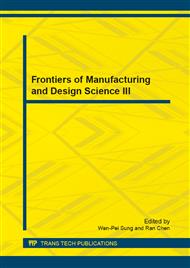p.565
p.570
p.575
p.580
p.584
p.589
p.594
p.597
p.601
Study on the Kinetic Anti-Missile Fragment Based on NASA Model
Abstract:
The question of the anti-missile fragment produced by the Kinetic Kill Vehicle (KKV) intercepting the Tactical Ballistic Missile (TBM) is studied. It turns out the anti-missile fragment are composite outcome of the impact and explosion. By analysis the National Aeronautics and Space Administration (NASA) impact breakup model is suggested to calculate the fragment charac-teristic. The minimum mass threshold of effective fragment is deduced; the damages probability model that the debris cloud impacts the cooperative target is established based on Poisson distribu-tion. The simulation case indicates that the damage probability can achieve the 10-3 magnitude, and should attach importance to this threat.
Info:
Periodical:
Pages:
584-588
Citation:
Online since:
December 2012
Authors:
Keywords:
Price:
Сopyright:
© 2013 Trans Tech Publications Ltd. All Rights Reserved
Share:
Citation:


